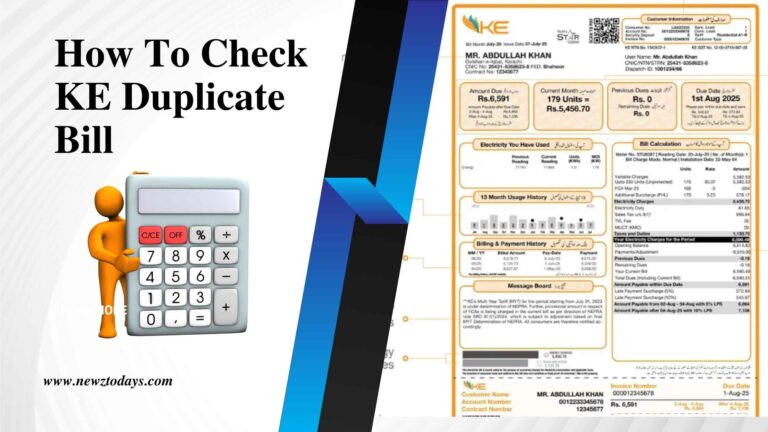Power Division rejects APTMA claims on IGCEP as flawed
Spokesperson of Power Division, while commenting on APTMA comments on IGCEP, has termed it a flawed and devoid of complete visibility of facts and data. The Ministry of Energy (Power Division) welcomes open debate and constructive criticism, as transparency is essential for improving our systems.
However, the claims do not reflect the facts and may give the wrong impression about how the future planning of the power system is carried out.How to Check and Pay IESCO Bill Online
The Spokesperson, in his comments, said that the IGCEP 2025 to 2035 marks a significant shift in Pakistan’s power sector planning by focusing on affordability, transparency, and long-term sustainability.
Compared to the previous plans, the revised plan achieves an estimated USD 17 billion in savings by reducing around 7,000 MW of committed projects from the previous IGCEP, which translates into a reduction of electricity cost by Rs. 4.96 per unit (kWh). Moreover, the candidate projects have been selected on the basis of least cost optimization. The central aim of the plan is to provide reliable, low cost electricity to the public.
With regards to the critique on the demand forecast utilized in IGCEP, the Spokesperson said that it is pointed out that the demand forecasting methodology is time-tested and vetted by international consultants.
The Global Forecast is based on regression modelling where GDP growth and the electricity price are the key independent variables, as these variables best capture economic activity and consumer demand behavior. Also, contrary to the claim in the article, population growth is not used as a driver in the model. Various scenarios are prepared, and statistical tests ensure that inconsistent or spurious relationships are discarded.
Moreover, The Spokesperson added that the global demand forecast is also verified through a comparison with another demand forecast, prepared through a bottom-up approach. Under the Grid Code 2023, every Distribution Company prepares a bottom-up forecast using feeder-level data and planned load from homes, industries, and other consumer categories.
These bottom-up forecasts also factor in rooftop solar, captive generation, energy efficiency programs, and other emerging trends. The System Operator consolidates these at the system level from all DISCOs and compares them with the regression-based Global Forecast. The output of these two forecasts is always within a close acceptable range as per the prescriptions of the Grid Code.
The spokesperson stressed that it is important to further clarify that distributed solar and substitution effects are explicitly considered under the current IGCEP iteration, and as such, the claim given in the article is not correct.
Furthermore, it must be noted that IGCEP 2025 to 2035 also moves the sector toward greater transparency and economic efficiency. Expensive projects not needed under the current circumstances have been excluded, while emphasis has been placed on indigenous resources such as hydro, solar, wind, and nuclear. This transition reduces dependence on imported fuels like coal and RLNG, saving billions in foreign exchange and strengthening energy security.
Moreover, it is important to highlight that strategic projects that go beyond least cost selection are subject to the Least Cost Violation methodology, meaning any excess cost is borne by the sponsoring agency.
With regards to the claims regarding higher Capacity Costs, the Spokesperson stated that in recent years, Pakistan, in order to achieve objectives of least cost and energy security ,has added nuclear and local coal projects.
These carry higher fixed costs but much lower energy costs. The IGCEP evaluates total costs, ensuring that consumers benefit from lower overall tariffs while energy security improves and fuel imports decline. Over time, with the induction of renewables and retirement of older thermal plants, the growth of capacity payments will moderate, leading to a more affordable and sustainable power mix.
It is also important to highlight that electricity planning cannot be based on current demand only. IGCEP must look 10 to 20 years ahead, reflecting the growth of cities, industry, electric transport, cooling needs, and new technologies. That is why the Grid Code provides a transparent, consultative, and evidence-based framework for demand forecasting.
The Ministry remains committed to ensuring that future electricity plans are not only realistic but also reliable and affordable, supporting Pakistan’s long-term growth and energy security, added the Spokesperson.






